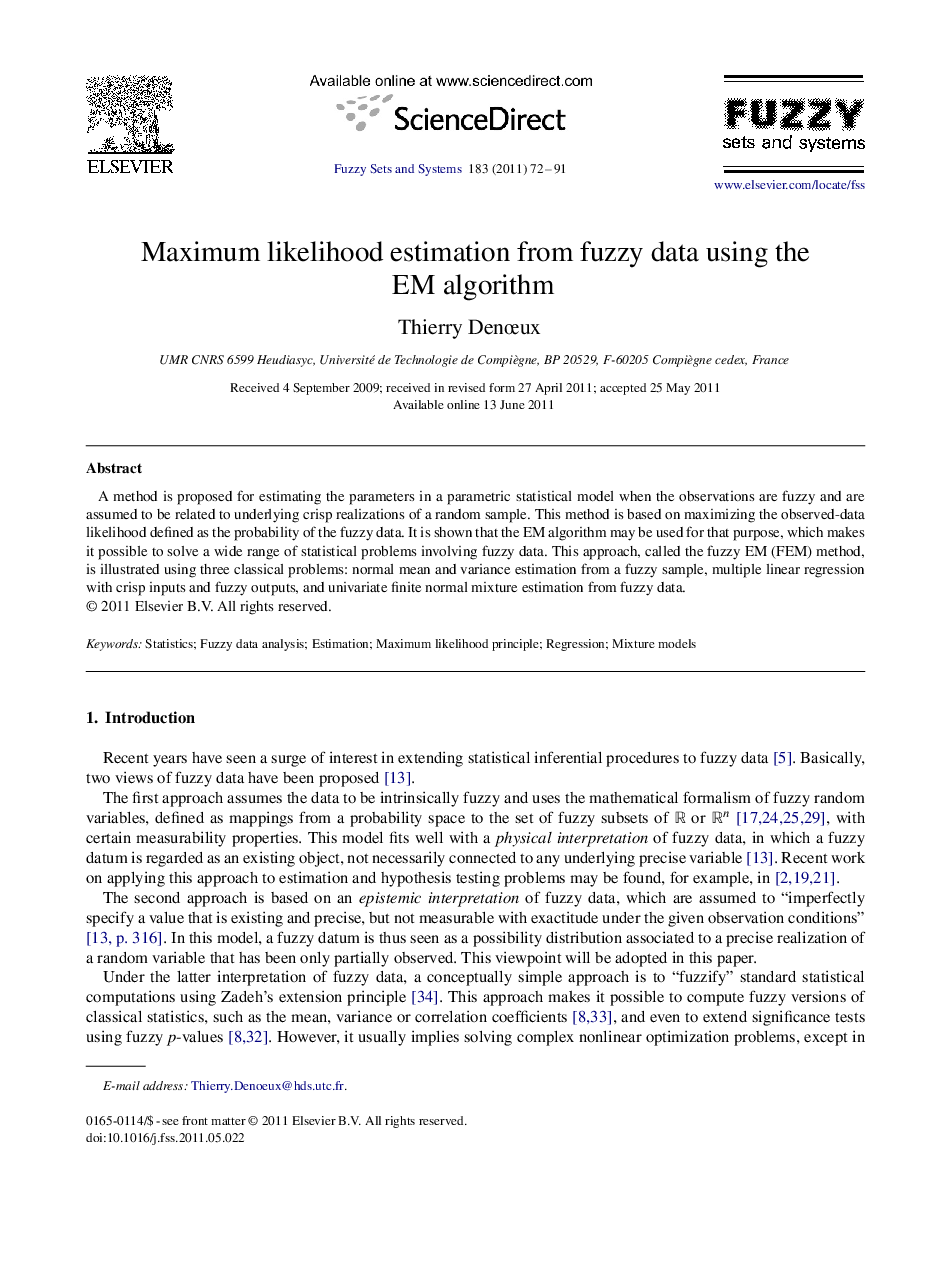| Article ID | Journal | Published Year | Pages | File Type |
|---|---|---|---|---|
| 390037 | Fuzzy Sets and Systems | 2011 | 20 Pages |
A method is proposed for estimating the parameters in a parametric statistical model when the observations are fuzzy and are assumed to be related to underlying crisp realizations of a random sample. This method is based on maximizing the observed-data likelihood defined as the probability of the fuzzy data. It is shown that the EM algorithm may be used for that purpose, which makes it possible to solve a wide range of statistical problems involving fuzzy data. This approach, called the fuzzy EM (FEM) method, is illustrated using three classical problems: normal mean and variance estimation from a fuzzy sample, multiple linear regression with crisp inputs and fuzzy outputs, and univariate finite normal mixture estimation from fuzzy data.
► We consider the problem of estimating parameters in statistical models when observations are fuzzy. ► Fuzzy data are assumed to represent partial knowledge of ill-observed crisp random data. ► A method, based on the EM algorithm, is proposed to maximize the observed-data likelihood, defined as the probability of the fuzzy data according to Zadeh's definition. ► The proposed iterative procedure, called the fuzzy EM (FEM) method, generates a nondecreasing sequence of observed-data likelihood values and converges to a local maximum of the likelihood function except in degenerate cases. ► This very general approach is applied to normal mean and variance estimation, linear regression and normal mixture estimation from fuzzy data.
